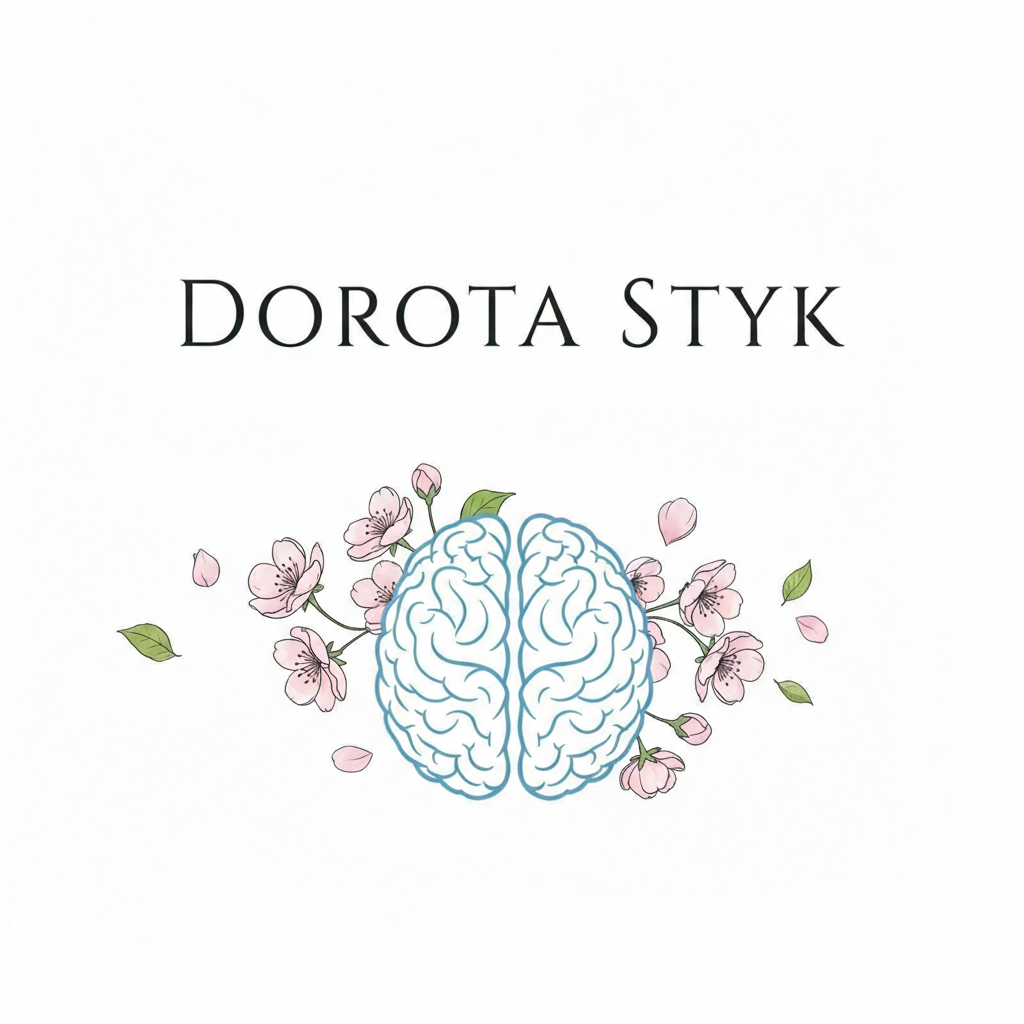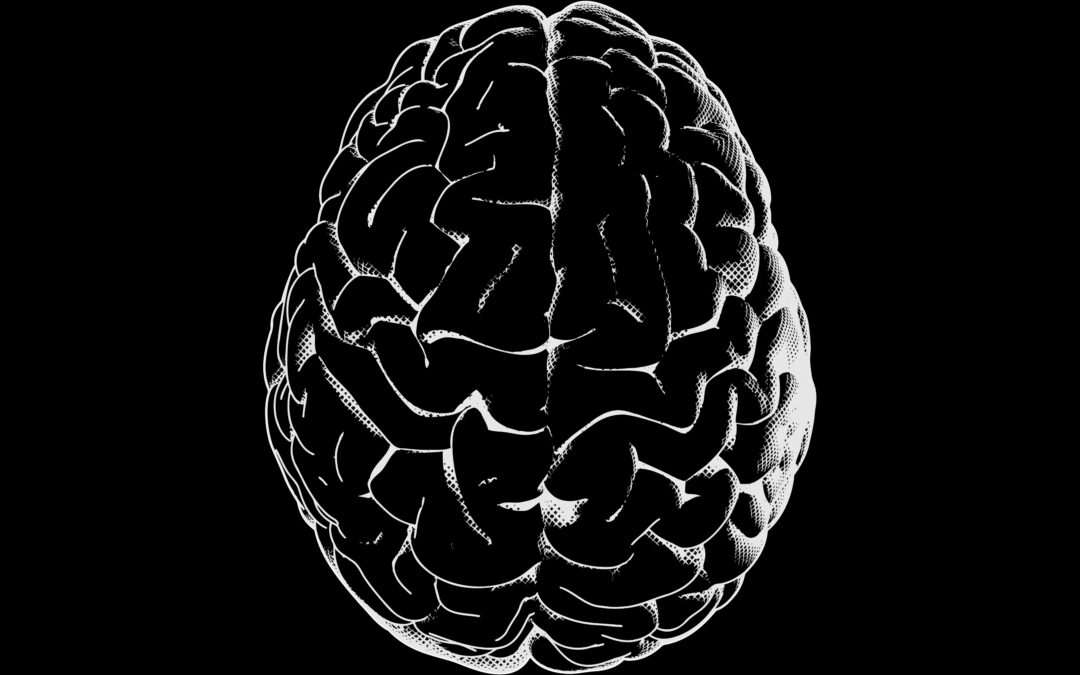Grief is a universal human experience that can occur following the loss of a loved one, whether human or animal. While the loss of a human companion has long been recognized as a significant source of grief, the emotional impact of losing a pet has gained increasing attention in recent years. This essay aims to compare and contrast the grief experiences associated with human and pet loss, drawing on scientific research findings to explore the similarities, differences, and unique aspects of each type of bereavement.
The Nature of Grief
Grief is a complex emotional response to loss, characterized by a range of psychological, physical, and social reactions. Both human and pet loss can trigger intense grief reactions, though the specific manifestations and societal recognition of these experiences may differ.
Grief Intensity
Research has shown that the intensity of grief following pet loss can be comparable to that experienced after human loss in some cases. Gerwolls and Labott (1994) found that levels of grief following a pet’s loss were comparable to levels of grief following the loss of a human. However, other studies have indicated that grief intensity may be lower for pet loss compared to human loss, though still significant (Field et al., 2009).
The intensity of grief can vary depending on the type of relationship lost. For instance, the loss of a close friend can have significant psychological impacts. A study by Liu et al. (2019) found that bereaved friends experienced similar levels of grief intensity as family members in the first year after a loss. This finding highlights that the loss of a close friend can be just as impactful as the loss of a family member, challenging the notion that only familial losses result in intense grief reactions.
Duration of Grief
The duration of grief can vary for both human and pet loss. Hunt et al. (2008) found that the period of grief associated with the loss of a companion animal may be even longer than with a person in some cases. For pet loss, the acute phase of grief reactions often occurs within a two-month time frame around the loss, with uncomplicated pet grief lasting from six months to a year.
In human loss, particularly for close relationships such as friends or family members, grief can persist for extended periods. Herberman Mash et al. (2013) found that 16% of bereaved close friends met criteria for complicated grief 3-4 years after a sudden death. This finding suggests that a significant proportion of individuals may experience prolonged and intense grief reactions long after the initial loss.
Factors Influencing Grief Intensity
Several factors can influence the intensity of grief experienced in both human and pet loss situations.
Attachment and Bond
The strength of the attachment bond is a crucial factor in determining grief intensity for both human and pet loss. In the case of pet loss, Zilcha-Mano et al. (2011) found that the intensity of grief was positively correlated with the strength of the attachment to the pet. Similarly, attachment plays a significant role in human grief experiences.
Attachment theory provides a useful framework for understanding grief reactions in human relationships as well. A study by Wayment and Vierthaler (2002) found that attachment style predicted grief intensity after friend loss, with anxiously attached individuals reporting more intense grief. Additionally, Servaty-Seib and Pistole (2006) found that attachment security was associated with lower grief intensity and better coping after a significant loss. These studies suggest that attachment patterns play an important role in shaping grief responses after losing a close friend or family member.
Circumstances of Death
The circumstances surrounding the death can impact grief intensity in both human and pet loss. Sudden or traumatic deaths often lead to more intense and complicated grief reactions. For pet loss, euthanasia decisions can add an additional layer of complexity to the grieving process (Adams et al., 2000).
In human loss, traumatic deaths can have particularly severe and long-lasting effects, especially for young people. A longitudinal study by Kaplow et al. (2014) found that bereaved youth who lost a parent to sudden, violent death had higher rates of depression and PTSD symptoms compared to those who experienced anticipated parental death. Additionally, Brent et al. (2012) found that sudden parental death in childhood was associated with increased risk for depression and substance abuse persisting into adulthood. These studies demonstrate the long-term psychological consequences of traumatic loss for young people.
Social Support
Social support plays a crucial role in the grieving process for both human and pet loss. However, pet loss grief is often disenfranchised, meaning it may not receive the same level of social recognition and support as human loss grief (Doka, 2008). This lack of social validation can complicate the grieving process for pet owners.
In human loss, social support can significantly influence the grief experience. Research has shown that perceived social support is associated with better psychological outcomes following bereavement (Stroebe et al., 2005). However, the availability and quality of social support may vary depending on the type of relationship lost. For instance, the loss of a close friend may not elicit the same level of social support as the loss of a family member, potentially leading to feelings of isolation or disenfranchised grief.
Unique Aspects of Pet Loss Grief
While there are similarities between human and pet loss grief, several aspects are unique to the experience of losing a companion animal.
Anthropomorphism and Humanization
Pet owners often anthropomorphize their animals, attributing human-like qualities to them. This tendency can intensify the grief experience when a pet dies. Research has shown that pet owners who strongly humanize their pets may experience more intense grief reactions (Archer & Winchester, 1994).
Guilt and Euthanasia Decisions
Pet owners may experience unique feelings of guilt, particularly in cases involving euthanasia. The responsibility of making end-of-life decisions for pets can lead to complicated grief reactions and moral distress (Adams et al., 2000). This aspect of pet loss grief is distinct from most human loss situations, where individuals typically do not bear the responsibility for end-of-life decisions.
Lack of Societal Recognition
Pet loss grief is often not given the same societal recognition as human loss grief. This lack of validation can lead to feelings of isolation and may complicate the grieving process for pet owners (Doka, 2008). While there has been increasing recognition of the significance of pet loss in recent years, it still does not receive the same level of societal acknowledgment as human loss.
Psychological and Emotional Responses
Both human and pet loss can trigger a range of psychological and emotional responses in bereaved individuals.
Depression and Anxiety
Research has shown that both human and pet loss can lead to symptoms of depression and anxiety. Rajaram et al. (1993) found that people who had recently lost a pet were three times more likely to report symptoms of depression than the normal population. Similar findings have been reported for human loss grief.
In the context of human loss, particularly traumatic losses, the risk of developing depression and anxiety disorders is significant. A meta-analysis by Heeke et al. (2017) found that individuals who experienced traumatic loss were at increased risk for both depression and posttraumatic stress disorder (PTSD) compared to those who experienced non-traumatic loss.
Complicated Grief
Complicated grief, characterized by prolonged and intense grief reactions, can occur in both human and pet loss situations. Herberman Mash et al. (2014) found that 16% of bereaved siblings and close friends met the criteria for complicated grief after human loss. While less studied, complicated grief can also occur following pet loss, particularly when the bond was strong and the loss sudden or traumatic.
The recognition of prolonged grief as a distinct clinical entity has led to its inclusion in diagnostic manuals. A meta-analysis by Lundorff et al. (2017) found that about 10% of bereaved individuals experience prolonged grief disorder. Prigerson et al. (2009) developed diagnostic criteria for prolonged grief disorder and demonstrated its distinctness from depression and anxiety. These studies provided the empirical basis for recognizing prolonged grief as a distinct clinical entity in both the DSM-5 and ICD-11.
Post-Traumatic Stress Symptoms
Traumatic losses, whether human or animal, can lead to post-traumatic stress symptoms. Layne et al. (2017) noted the interplay between posttraumatic stress symptoms and grief reactions that can arise following traumatic bereavement in adolescence. This phenomenon has been observed in both human and pet loss situations, particularly when the death circumstances were violent or unexpected.
The prevalence of PTSD symptoms following traumatic loss can be significant. A study by Kristensen et al. (2017) of bereaved individuals after the 2011 Utøya attack found that 30.9% of bereaved friends had probable complicated grief 18 months post-loss. This finding highlights the potential for long-term psychological consequences following traumatic losses.
Coping Mechanisms and Grief Processing
Individuals employ various coping mechanisms to process grief following both human and pet loss.
Continuing Bonds
The concept of continuing bonds, which involves maintaining a connection with the deceased, has been observed in both human and pet loss grief. Field et al. (2009) found that continuing bonds can serve as a means of coping for bereaved pet owners. Similarly, continuing bonds have been recognized as a healthy aspect of human grief processing.
Research on human loss has shown that maintaining a continuing bond with the deceased can be adaptive for some individuals. Klass et al. (1996) introduced the continuing bonds perspective, challenging the notion that successful grieving requires “letting go” of the deceased. Subsequent research has supported the potential benefits of continuing bonds in facilitating adjustment to loss (Stroebe et al., 2010).
Memorialization and Rituals
Engaging in memorialization activities and rituals can be beneficial for processing grief in both human and pet loss situations. However, the specific rituals and societal acceptance of these practices may differ. For pet loss, creating memorials, holding funeral services, or keeping mementos can aid in the grieving process (Adams et al., 2000).
In human loss, rituals and memorialization practices are often more formalized and socially recognized. Research has shown that participation in funeral rituals can facilitate the grieving process and provide social support for bereaved individuals (Mitima-Verloop et al., 2019). However, the COVID-19 pandemic has highlighted the importance of these rituals, as restrictions on gatherings have led to disrupted grief processes for many bereaved individuals (Burrell & Selman, 2020).
Professional Support
Seeking professional support, such as counseling or therapy, can be beneficial for both human and pet loss grief. However, pet loss-specific grief counseling services are less common and may be less readily available compared to human loss grief support (Dunn et al., 2005).
For human loss, particularly in cases of complicated grief, professional interventions have shown efficacy. A systematic review by Johannsen et al. (2019) found that cognitive-behavioral therapy and complicated grief treatment were effective in reducing symptoms of prolonged grief disorder. These findings underscore the importance of accessible, evidence-based interventions for individuals experiencing complicated grief reactions.
Social and Cultural Factors
Social and cultural factors play a significant role in shaping grief experiences for both human and pet loss.
Cultural Attitudes
Cultural attitudes towards death, mourning, and the status of animals can significantly influence grief experiences. In some cultures, the loss of a pet may be viewed as less significant than human loss, potentially leading to disenfranchised grief for pet owners (Doka, 2008).
Cross-cultural research on human grief has revealed significant variations in mourning practices and expressions of grief. Rosenblatt (2008) highlighted how cultural norms influence the expression and duration of grief, as well as the social support available to bereaved individuals. Understanding these cultural differences is crucial for providing culturally sensitive support to bereaved individuals from diverse backgrounds.
Family Dynamics
Family dynamics can impact grief experiences in both human and pet loss situations. In the case of pet loss, disagreements among family members about the pet’s status or end-of-life decisions can complicate the grieving process (Adams et al., 2000).
In human loss, family dynamics can significantly influence the grief experience. Research has shown that family functioning and communication patterns can affect individual grief reactions and overall family adaptation to loss (Kissane et al., 1996). Additionally, the loss of a family member can lead to shifts in family roles and relationships, potentially causing additional stress during the grieving process (Walsh & McGoldrick, 2013).
Workplace Considerations
Grief can affect an individual’s ability to function in the workplace. While bereavement leave is often granted for human loss, similar accommodations are less common for pet loss, potentially leading to additional stress for grieving pet owners (Green et al., 2018).
Research on grief in the workplace has highlighted the challenges faced by bereaved employees. A study by Breen and O’Connor (2011) found that many bereaved individuals felt pressured to return to work before they felt ready, and often experienced difficulties concentrating and maintaining productivity. These findings underscore the need for workplace policies that recognize the impact of grief and provide appropriate support and accommodations for bereaved employees.
Long-Term Impact and Personal Growth
Both human and pet loss grief can have long-term impacts on individuals and potentially lead to personal growth.
Identity Changes
The loss of a significant relationship, whether human or animal, can lead to changes in personal identity. For pet owners, the loss of a companion animal may require adjustments to daily routines and social roles (Brown et al., 1996).
In human loss, particularly the loss of close relationships such as a spouse or child, identity changes can be profound. Neimeyer et al. (2006) proposed that a central task of grieving is the reconstruction of meaning, including one’s sense of self in the wake of loss. This process of identity reconstruction can be challenging but may also lead to personal growth and development.
Meaning-Making
Engaging in meaning-making processes can be an important aspect of grief resolution for both human and pet loss. Finding meaning in the loss and integrating it into one’s life narrative can facilitate healing and personal growth (Neimeyer, 2000).
Research on meaning-making in bereavement has shown its importance in facilitating adjustment to loss. A study by Gillies and Neimeyer (2006) found that bereaved individuals who were able to make sense of their loss and find benefits or positive outcomes reported better psychological adjustment. This highlights the potential for growth and positive change even in the face of significant loss.
Post-Traumatic Growth
While less studied in the context of pet loss, post-traumatic growth has been observed in some individuals following significant losses. This phenomenon involves positive psychological changes that occur as a result of struggling with highly challenging life circumstances (Tedeschi & Calhoun, 2004).
Research on post-traumatic growth following human loss has identified several domains of growth, including increased personal strength, enhanced relationships, and a greater appreciation for life (Calhoun et al., 2010). A meta-analysis by Shakespeare-Finch and Lurie-Beck (2014) found a significant relationship between PTSD symptoms and post-traumatic growth, suggesting that growth can occur even in the context of significant distress.
Conclusion
The comparison of grief experiences following human and pet loss reveals both similarities and differences. While the intensity and duration of grief can be comparable in some cases, pet loss grief often faces unique challenges related to societal recognition and support. Factors such as attachment strength, circumstances of death, and available social support influence grief experiences in both contexts.
Pet loss grief is characterized by unique aspects such as anthropomorphism, euthanasia-related guilt, and a lack of societal validation. However, both types of loss can lead to significant psychological and emotional responses, including depression, anxiety, and complicated grief.
Coping mechanisms and grief processing strategies show similarities across human and pet loss grief, with continuing bonds, memorialization, and professional support playing important roles. Social and cultural factors, including cultural attitudes and family dynamics, shape grief experiences in both contexts.
Finally, both human and pet loss grief can have long-term impacts on individuals, potentially leading to identity changes, meaning-making processes, and personal growth. While research on pet loss grief is still emerging, recognizing its significance and providing appropriate support is crucial for promoting healthy grief resolution and overall well-being.
As society continues to recognize the importance of the human-animal bond, further research into the similarities and differences between human and pet loss grief will be essential for developing comprehensive support systems and interventions for all types of bereavement. This research should aim to address gaps in our understanding of pet loss grief, including its long-term impacts and potential for post-traumatic growth.
Moreover, the inclusion of prolonged grief disorder in diagnostic manuals highlights the need for continued research on complicated grief reactions in both human and pet loss contexts. Understanding the factors that contribute to complicated grief and developing effective interventions will be crucial for supporting individuals who experience persistent, impairing grief reactions.
Future research should also explore the intersection of different types of losses, such as the compounded effects of experiencing both human and pet loss in close succession. Additionally, investigating the impact of societal changes, such as the increased recognition of non-traditional relationships and family structures, on grief experiences and support systems will be important for developing inclusive and effective bereavement support.
In conclusion, while human and pet loss grief share many commonalities, each type of loss also presents unique challenges and considerations. By continuing to study and understand these experiences, we can work towards creating a more compassionate and supportive environment for all individuals navigating the complex journey of grief and loss.
References
Adams, C. L., Bonnett, B. N., & Meek, A. H. (2000). Predictors of owner response to companion animal death in 177 clients from 14 practices in Ontario. Journal of the American Veterinary Medical Association, 217(9), 1303-1309.
Archer, J., & Winchester, G. (1994). Bereavement following death of a pet. British Journal of Psychology, 85(2), 259-271.
Breen, L. J., & O’Connor, M. (2011). Family and social networks after bereavement: Experiences of support, change and isolation. Journal of Family Therapy, 33(1), 98-120.
Brent, D., Melhem, N., Donohoe, M. B., & Walker, M. (2012). The incidence and course of depression in bereaved youth 21 months after the loss of a parent to suicide, accident, or sudden natural death. American Journal of Psychiatry, 169(7), 786-794.
Brown, B. H., Richards, H. C., & Wilson, C. A. (1996). Pet bonding and pet bereavement among adolescents. Journal of Counseling & Development, 74(5), 505-509.
Burrell, A., & Selman, L. E. (2020). How do funeral practices impact bereaved relatives’ mental health, grief and bereavement? A mixed methods review with implications for COVID-19. OMEGA-Journal of Death and Dying, 82(3), 500-520.
Calhoun, L. G., Tedeschi, R. G., Cann, A., & Hanks, E. A. (2010). Positive outcomes following bereavement: Paths to posttraumatic growth. Psychologica Belgica, 50(1-2), 125-143.
Doka, K. J. (2008). Disenfranchised grief in historical and cultural perspective. In M. S. Stroebe, R. O. Hansson, H. Schut, & W. Stroebe (Eds.), Handbook of bereavement research and practice: Advances in theory and intervention (pp. 223-240). American Psychological Association.
Dunn, K. L., Mehler, S. J., & Greenberg, H. S. (2005). Social work with a pet loss support group in a university veterinary hospital. Social Work in Health Care, 41(2), 59-70.
Field, N. P., Orsini, L., Gavish, R., & Packman, W. (2009). Role of attachment in response to pet loss. Death Studies, 33(4), 334-355.
Gerwolls, M. K., & Labott, S. M. (1994). Adjustment to the death of a companion animal. Anthrozoös, 7(3), 172-187.
Gillies, J., & Neimeyer, R. A. (2006). Loss, grief, and the search for significance: Toward a model of meaning reconstruction in bereavement. Journal of Constructivist Psychology, 19(1), 31-65.
Green, J., Calhoun, F., Rudolph, J., & Briggs, L. (2018). Grief in the workplace: When employees lose loved ones. Journal of Change Management, 18(2), 185-202.
Heeke, C., Kampisiou, C., Niemeyer, H., & Knaevelsrud, C. (2017). A systematic review and meta-analysis of correlates of prolonged grief disorder in adults exposed to violent loss. European Journal of Psychotraumatology, 8(sup6), 1583524.
Herberman Mash, H. B., Fullerton, C. S., & Ursano, R. J. (2013). Complicated grief and bereavement in young adults following close friend and sibling loss. Depression and Anxiety, 30(12), 1202-1210.
Hunt, M., Al-Awadi, H., & Johnson, M. (2008). Psychological sequelae of pet loss following Hurricane Katrina. Anthrozoös, 21(2), 109-121.
Johannsen, M., Damholdt, M. F., Zachariae, R., Lundorff, M., Farver-Vestergaard, I., & O’Connor, M. (2019). Psychological interventions for grief in adults: A systematic review and meta-analysis of randomized controlled trials. Journal of Affective Disorders, 253, 69-86.
Kaplow, J. B., Saunders, J., Angold, A., & Costello, E. J. (2010). Psychiatric symptoms in bereaved versus nonbereaved youth and young adults: A longitudinal epidemiological study. Journal of the American Academy of Child & Adolescent Psychiatry, 49(11), 1145-1154.
Kissane, D. W., Bloch, S., Dowe, D. L., Snyder, R. D., Onghena, P., McKenzie, D. P., & Wallace, C. S. (1996). The Melbourne Family Grief Study, I: Perceptions of family functioning in bereavement. American Journal of Psychiatry, 153(5), 650-658.
Klass, D., Silverman, P. R., & Nickman, S. L. (Eds.). (1996). Continuing bonds: New understandings of grief. Taylor & Francis.
Kristensen, P., Dyregrov, K., & Dyregrov, A. (2017). What distinguishes prolonged grief disorder from depression? Tidsskrift for Norsk Psykologforening, 54(2), 168-174.
Layne, C. M., Kaplow, J. B., & Youngstrom, E. A. (2017). Applying evidence-based assessment to childhood trauma and bereavement: Concepts, principles, and practices. In M. A. Landolt, M. Cloitre, & U. Schnyder (Eds.), Evidence-based treatments for trauma related disorders in children and adolescents (pp. 67-96). Springer.
Liu, W. M., Forbat, L., & Anderson, K. (2019). Death of a close friend: Short and long-term impacts on physical, psychological and social well-being. PLoS ONE, 14(4), e0214838.
Lundorff, M., Holmgren, H., Zachariae, R., Farver-Vestergaard, I., & O’Connor, M. (2017). Prevalence of prolonged grief disorder in adult bereavement: A systematic review and meta-analysis. Journal of Affective Disorders, 212, 138-149.
Mitima-Verloop, H. B., Mooren, T. T., & Boelen, P. A. (2019). Facilitating grief: An exploration of the function of funerals and rituals in relation to grief reactions. Death Studies, 45(9), 735-745.
Neimeyer, R. A. (2000). Searching for the meaning of meaning: Grief therapy and the process of reconstruction. Death Studies, 24(6), 541-558.
Neimeyer, R. A., Baldwin, S. A., & Gillies, J. (2006). Continuing bonds and reconstructing meaning: Mitigating complications in bereavement. Death Studies, 30(8), 715-738.
Prigerson, H. G., Horowitz, M. J., Jacobs, S. C., Parkes, C. M., Aslan, M., Goodkin, K., … & Maciejewski, P. K. (2009). Prolonged grief disorder: Psychometric validation of criteria proposed for DSM-V and ICD-11. PLoS Medicine, 6(8), e1000121.
Rajaram, S. S., Garrity, T. F., Stallones, L., & Marx, M. B. (1993). Bereavement: Loss of a pet and loss of a human. Anthrozoös, 6(1), 8-16.
Rosenblatt, P. C. (2008). Grief across cultures: A review and research agenda. In M. S. Stroebe, R. O. Hansson, H. Schut, & W. Stroebe (Eds.), Handbook of bereavement research and practice: Advances in theory and intervention (pp. 207-222). American Psychological Association.
Servaty-Seib, H. L., & Pistole, M. C. (2006). Adolescent grief: Relationship category and emotional closeness. OMEGA-Journal of Death and Dying, 54(2), 147-167.
Shakespeare-Finch, J., & Lurie-Beck, J. (2014). A meta-analytic clarification of the relationship between posttraumatic growth and symptoms of posttraumatic distress disorder. Journal of Anxiety Disorders, 28(2), 223-229.
Stroebe, M., Schut, H., & Stroebe, W. (2005). Attachment in coping with bereavement: A theoretical integration. Review of General Psychology, 9(1), 48-66.
Stroebe, M., Schut, H., & Boerner, K. (2010). Continuing bonds in adaptation to bereavement: Toward theoretical integration. Clinical Psychology Review, 30(2), 259-268.
Tedeschi, R. G., & Calhoun, L. G. (2004). Posttraumatic growth: Conceptual foundations and empirical evidence. Psychological Inquiry, 15(1), 1-18.
Walsh, F., & McGoldrick, M. (2013). Bereavement: A family life cycle perspective. Family Science, 4(1), 20-27.
Wayment, H. A., & Vierthaler, J. (2002). Attachment style and bereavement reactions. Journal of Loss and Trauma, 7(2), 129-149.
Zilcha-Mano, S., Mikulincer, M., & Shaver, P. R. (2011). An attachment perspective on human–pet relationships: Conceptualization and assessment of pet attachment orientations. Journal of Research in Personality, 45(4), 345-357.
Citations:
[1] https://ppl-ai-file-upload.s3.amazonaws.com/web/direct-files/13024694/99cf2cad-dbd8-49c6-a9b1-80f6b02cc9ea/paste.txt

I am an experimental psychologist and cognitive neuroscientist, working as a PhD researcher in the Centre for Cognition, Computation and Modelling at Birkbeck, University of London. My work investigates the architecture of working memory, how our highest cognitive functions develop and change across the lifespan, and the design of interventions to support cognitive health, particularly in ageing.
My professional foundation in psychology and cognitive neuroscience is built upon over fifteen years of continuous, hands-on research and applied practice. This extensive trajectory is formally validated by a portfolio of over 245 accredited Continuing Professional Development and Continuing Medical Education certificates, reflecting a sustained and profound dedication to expertise.
My work is defined by established, evidence-based concentrations in complex, high-impact areas:
-
Clinical & Neurocognitive Health: My advanced expertise encompasses the neuroscience and clinical management of degenerative diseases such as Alzheimer's, Parkinson's, and Multiple Sclerosis, alongside neurodevelopmental conditions including ADHD and Autism. I also maintain a command of trauma-informed care, epilepsy, sleep disorders, schizophrenia, and substance use disorders.
-
Women's Mental Health & Lifespan Care: A core area of my practice focuses on women's mental health, with in-depth knowledge of disorders where biological and psychological health intersect. This includes specialised proficiency in perinatal and postpartum mental health, perimenopausal and menopausal mood disorders, the psychological impact of polycystic ovary syndrome (PCOS) and endometriosis, and the mental health dimensions of breast cancer and cardiovascular disease.
-
Intervention, Innovation & Cognitive Healthspan: My concentration is in designing both cognitive rehabilitation strategies and evidence-based programmes for healthy cognitive ageing. This involves the applied use and governance of AI in healthcare, machine learning for health equity, gamification in treatment, and deploying integrated telehealth platforms to support cognitive vitality across the lifespan.
-
Inclusive Practice & Scientific Leadership: My work is grounded in expert knowledge of mental health leadership, team-based care models, and the psychology of influence. It is further informed by advanced, practical training in diversity, equity, and inclusion—with a particular focus on LGBTQ+ health, mitigating unconscious bias, and providing culturally integrated care—all governed by a rigorous framework of research ethics and science communication.
Outside of academic research, I design and build proprietary digital tools for cognitive intervention. This work is the foundation of NeuxScience, a Software-as-a-Service (SaaS) platform that I architected and developed. The system leverages my own machine learning models and data science pipelines to deliver personalised, adaptive cognitive training by integrating my research on higher order cognitive functions directly into the platform's core logic.
I am committed to making the science of the mind clear and useful. Through my writing, I aim to educate, share evidence, and show how research in cognition and brain health can be applied in everyday, meaningful ways.
In my life beyond work, I am a mother and wife, managing a very full home with three boys, four dogs, and five cats.



